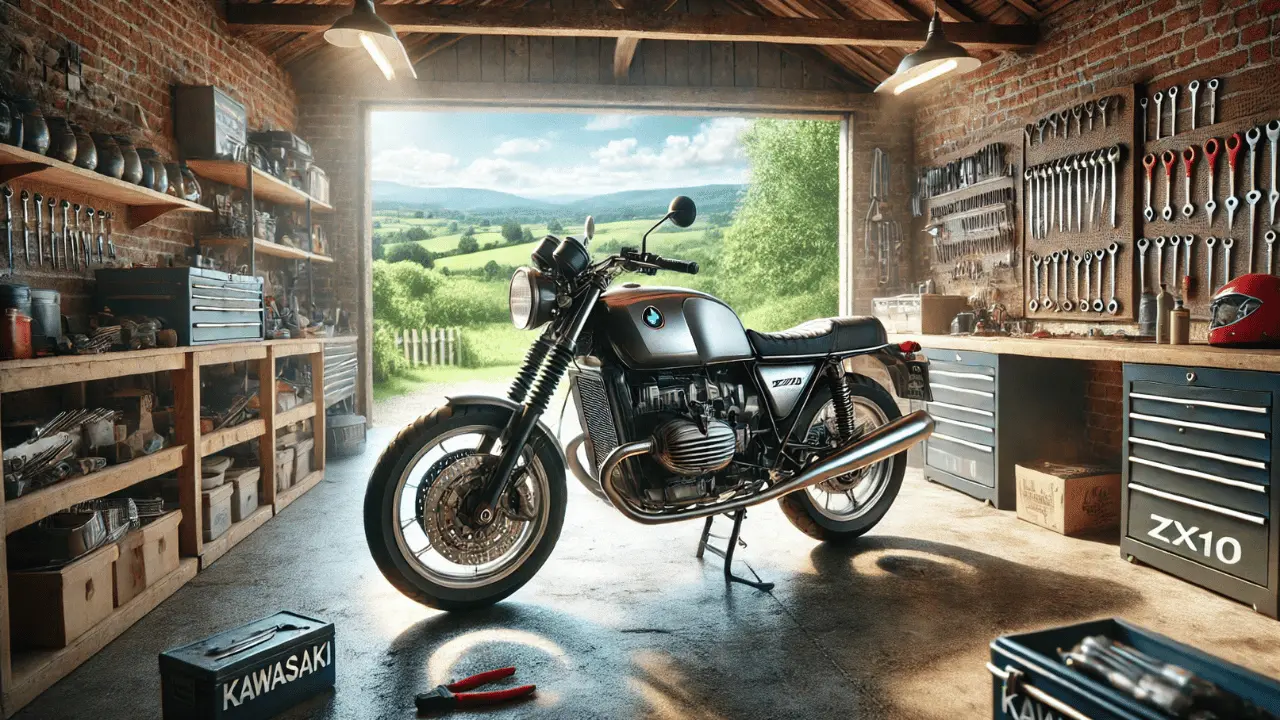Motorcycle enthusiasts have long sought ways to enhance the performance and aesthetics of their rides, and one of the most popular modifications involves fitting ZX10 forks on a K100. The BMW K100, with its robust frame and legendary reliability, is a favorite among custom builders. Adding Kawasaki ZX10 forks to the mix upgrades the handling, suspension, and overall ride quality, making the bike feel modern while retaining its vintage charm. In this article, we’ll delve into the process, benefits, and considerations for this transformative modification.
Understanding the ZX10 Forks
The Kawasaki ZX10 forks are highly regarded in the world of sportbike suspension systems. Designed for the ZX-10R, a high-performance superbike, these forks are engineered for precision, stability, and superior handling. They feature advanced suspension technology, including adjustable preload, compression, and rebound damping, making them versatile for various riding styles.
The ZX10 forks are lightweight and deliver a level of front-end feel that is hard to achieve with older suspension setups. Their sleek design and cutting-edge functionality make them a go-to choice for motorcycle builders looking to upgrade bikes like the BMW K100.
What Makes the BMW K100 a Great Candidate?
The BMW K100, affectionately known as the Flying Brick, is a motorcycle built to last. Its unique inline-four engine, mounted horizontally, gives it a low center of gravity and excellent stability. However, the stock front suspension on the K100, while functional, can feel outdated compared to modern standards.
This is where ZX10 forks shine. The K100’s frame is versatile enough to accommodate this upgrade with some modifications, allowing riders to combine the vintage appeal of the K100 with the high-performance capabilities of modern suspension.
How to Swap ZX10 Forks on a K100: The Process
Swapping ZX10 forks on a K100 involves precision, planning, and some custom work. Here’s a step-by-step overview of the process:
- Gather Necessary Parts:
- ZX10 forks, triple clamps, front wheel, and axle.
- Custom-made or modified bearings to fit the K100’s steering stem.
- Brake calipers compatible with the ZX10 forks.
- Disassemble the K100 Front End:
- Remove the existing forks, front wheel, and handlebars.
- Keep the steering stem intact as it will be crucial for fitting the new setup.
- Modify the Triple Clamps:
- Either source custom triple clamps or modify the ZX10 clamps to fit the K100 frame.
- Ensure the new setup aligns with the bike’s geometry for proper handling.
- Install Bearings and Spacers:
- Fit bearings and spacers to ensure smooth movement and proper alignment of the forks.
- This step often requires precision machining.
- Fit the ZX10 Forks:
- Install the forks into the modified triple clamps.
- Attach the front wheel and ensure the axle fits securely.
- Brake and Handlebar Setup:
- Mount brake calipers and ensure compatibility with the ZX10 forks.
- Reattach handlebars or consider upgrading to clip-ons for a sportier feel.
- Test Ride and Adjust:
- Take the bike for a test ride to assess the suspension and handling.
- Make adjustments to damping and preload settings as needed.
Performance Benifits of ZX10 Forks on a K100
The performance gains from installing ZX10 forks on a K100 are remarkable. These forks provide better front-end stability, enhanced braking performance, and smoother handling, especially in corners. Riders often report a dramatic improvement in confidence, as the bike feels more responsive and planted at higher speeds.
Additionally, the adjustability of ZX10 forks allows riders to fine-tune their suspension to match their riding style, whether it’s daily commuting, spirited canyon carving, or even track days.
Challenges and Solutions During the Swap
Like any custom modification, swapping ZX10 forks on a K100 comes with its challenges:
- Compatibility Issues: The steering stem and bearings often require custom machining or sourcing specialized parts to fit seamlessly.
- Brake and Axle Alignment: Ensuring that the brake calipers and axle align properly can be tricky and may require custom spacers or adapters.
- Cost of Custom Parts: While the ZX10 forks themselves are relatively affordable, additional costs for machining and custom components can add up.
The key to overcoming these challenges is meticulous planning and consulting with experts or forums where others have completed similar projects.
Tips for a Successful Fork Swap
- Do Your Research: Understand the specific requirements for your K100 model and the year of the ZX10 forks you’re using.
- Use Quality Parts: Don’t compromise on bearings, spacers, or other critical components.
- Seek Professional Help: If machining or custom work is beyond your skill level, consult a professional for assistance.
- Test Thoroughly: Once installed, test the bike in various conditions to ensure safety and performance.
Conclusion
Installing ZX10 forks on a K100 is more than just a modification; it’s a transformation. This upgrade breathes new life into the BMW K100, combining the best of both worlds: the timeless design of a classic bike and the cutting-edge technology of modern suspension. While the process requires effort and attention to detail, the result is a bike that not only looks stunning but rides like a dream. Whether you’re a seasoned builder or a passionate DIY enthusiast, this upgrade is a rewarding project that takes your K100 to the next level.
FAQs
Why swap ZX10 forks on a K100?
Swapping ZX10 forks improves the K100’s handling, braking, and overall performance, giving it a modern feel.
What tools are needed for the swap?
Basic tools include wrenches, a torque wrench, and specialized tools for fitting bearings and spacers.
Do I need custom parts for the swap?
Yes, components like triple clamps, bearings, and spacers often require custom machining or modification.
Is the modification beginner-friendly?
While possible for experienced DIY enthusiasts, beginners may need professional assistance for precision work.
What are the costs of a fork swap?
Costs vary depending on the availability of parts and custom work, but expect to spend on ZX10 forks, machining, and additional components.







